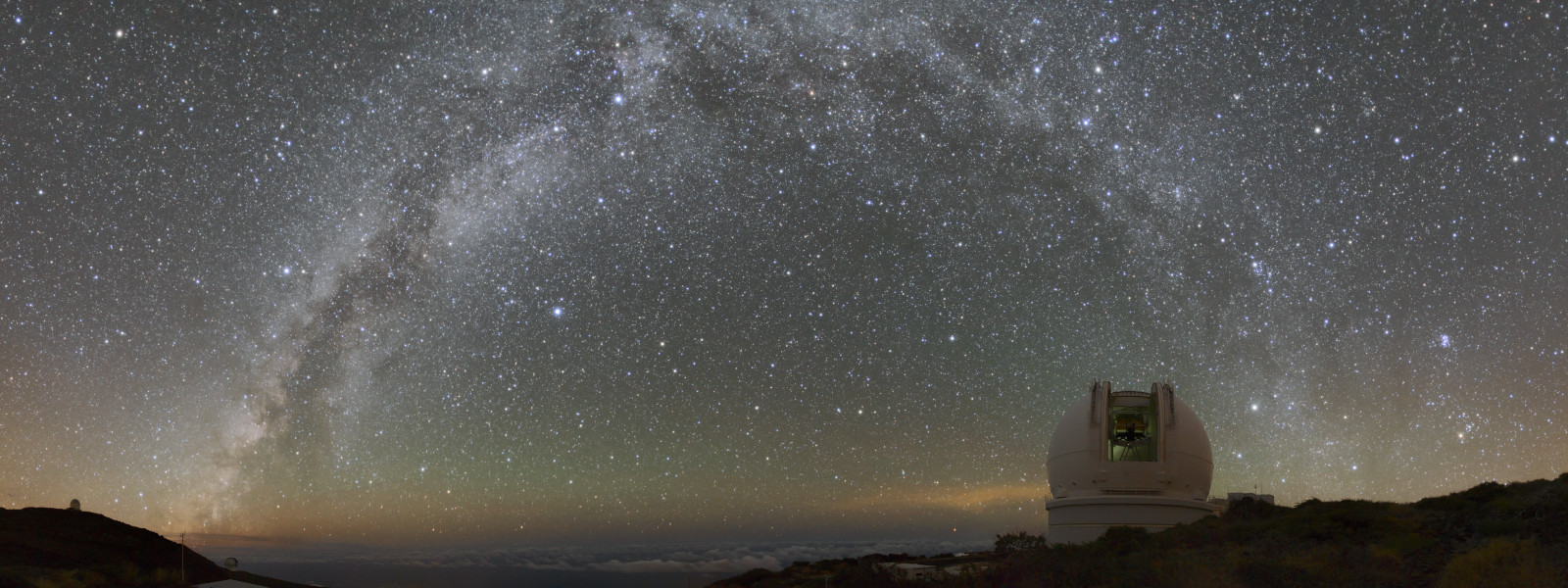Stardust and eternity – 3.3.1
Orienting yourself in the night sky
The night sky has always been an impressive and inspiring sight for mankind, especially before the technological era, when light pollution was not as dominant as today. Out of necessity, ancient civilizations were more attentive to the cycles of nature out and therefore developed their own systems to identify and map the stars in the sky. They ideally connected stars with imaginary lines to form patterns or “constellations”, which were often given mythological names surviving to this day. Constellations helped them understand the night sky. For this purpose, ancient civilisations such as the Babylonians, the Egyptians, or the pre-Columbian Maya (to name a few) also built unique, elaborate and imposing stone structures that were used to study astronomical positions and events. The reasons for this were mainly practical, as the repetition of the celestial objects observed in the sky each year made it possible both to orient oneself on Earth (or to navigate seas) and to plan agriculture, due to the Earth’s revolution around the Sun.
In this regard, a moderately bright star known as Polaris – the tip of the handle of Ursa Minor, or Little Dipper – was probably one of the most important celestial objects. Indeed, as this star remains fixed pointing north at a latitude almost equal to that of the observer, it has historically been used by navigators to determine the direction in which to travel at night. All other stars move in circular paths around it.
Even today, constellations serve as a kind of map of the night sky, especially for astronomical purposes. The International Astronomical Union has indeed divided the sky into 88 official constellations with definite boundaries, so that each star within these boundaries has the constellation’s name preceded by a Greek letter, according to its brightness. For example, the red supergiant Betelgeuse, the brightest star in the constellation Orion, is designed as “α Orionis”, while the second brightest, the blue supergiant Rigel at the left foot of Orion, is named “β Orionis”.
While constellations such as Orion or Ursa Major are easily and neatly identifiable at night (even with moderate light pollution), many others consist mostly of fainter star and are therefore harder to identify under normal stargazing conditions. A useful example is the aforementioned constellation Ursa Minor, whose seven stars – composing the “dipper” – become progressively fainter, starting with Polaris (α Ursae Minoris), and Kochab (β Ursae Minoris); they both have an apparent magnitude of about 2.0. However, other stars – from brightest to dimmest – have apparent magnitudes of 3.1, 4.2, 4.3, 4.4, and 5.0 and are therefore much fainter. Recall that the apparent magnitude is a scale of a star’s brightness measured on Earth on a logarithmic scale: higher numbers correspond to fainter brightnesses (so that a star of magnitude 2.0 is 25 times brighter than a +5.5 magnitude star!). As a principle, since the theoretical limiting magnitude for naked-eye visibility on a moonless night is about 6.0 in a perfectly clear sky, we should be able to see all seven stars that form the constellation. However, we know that on average the limiting magnitude in a city is around 4 at best. This means that we would have trouble finding this constellation in the night sky, as we would only be able to clearly identify the three brightest stars and would only have to guess what the constellation actually looks like.

Further resources
Links below will redirect you to external websites. In accordance with the European data protection declarations, we would like to point out that by clicking on these links you may send data to external providers. We cannot prevent that.
Images
![]() Ursa Minor – The Little Dipper & Polaris (John Chumack)
Ursa Minor – The Little Dipper & Polaris (John Chumack)
![]() How light pollution affects the dark night skies (ESO/P. Horálek, M. Wallner)
How light pollution affects the dark night skies (ESO/P. Horálek, M. Wallner)
Videos
![]() Celestial navigation – find North with the stars
Celestial navigation – find North with the stars
![]() How to find Orion constellation
How to find Orion constellation
![]() Where Are the Stars? See How Light Pollution Affects Night Skies (National Geographic)
Where Are the Stars? See How Light Pollution Affects Night Skies (National Geographic)
![]() Why No One Can See the Stars Anymore (PBS)
Why No One Can See the Stars Anymore (PBS)
On line resources
![]() How to orientate in the starry sky
How to orientate in the starry sky
![]() Learn the sky – youtube channel for stargazing and how to find constellations
Learn the sky – youtube channel for stargazing and how to find constellations
![]() Stellarium web – online planetarium
Stellarium web – online planetarium
Further readings
Teaching Material
![]() 5 resources for teaching astronomy
5 resources for teaching astronomy
For Kids
![]() How to find the North Star (video)
How to find the North Star (video)
![]() How to find Polaris (video)
How to find Polaris (video)
![]() How to find the Big Dipper (video)
How to find the Big Dipper (video)
